Last Updated on June 16, 2025 by Aram Vardanyan
Vayots Dzor is one of the most undiscovered regions in Armenia and the Boloraberd Fortress, or Proshaberd, is one of the lesser-known sights in the province.
This guide details a bit of the history of Boloraberd, along with some quick tips for how to reach it. Let us know if you have any comments or recommendations in the comments. Thanks!
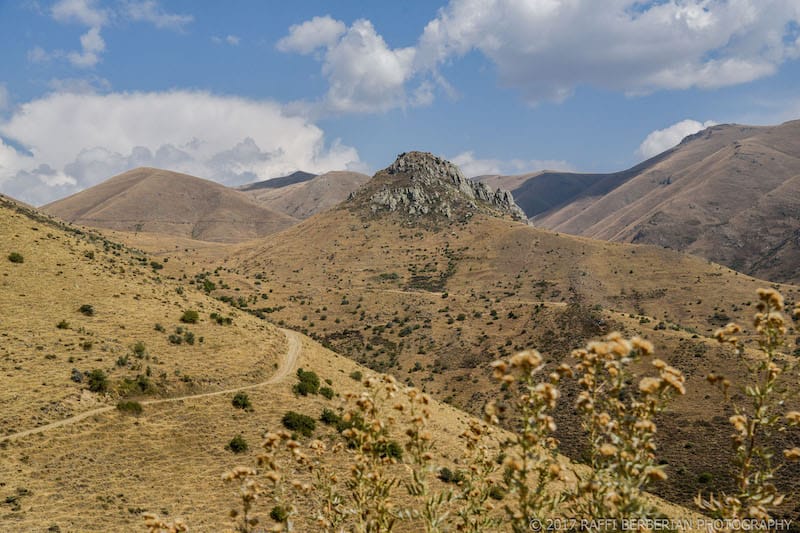
There isn’t much remaining of the 13th century Boloraberd Fortress (also known as Proshaberd) but if you are visiting the scenic Spitakavor Monastery, this is a site you shouldn’t miss!
This fortress was built by Prince Prosh Khaghbakian, who is also known to have enlarged the famed Monastery of Geghard.
As you drive up the dirt track towards the monastery, you will see a unique rocky hill on the right in the distance. It is on this hill that the fortress is located.
When you get closer, there will be a fork, to the left is the monastery and if you continue to the right you will get to the base of the rocky hill.
There is a little sign pointing to the fortress. We parked at the bottom next to the sign and walked up the hill. This is not for the faint of heart, it’s about a 5-10 minute walk up the steep hill.
As you walk up, you might not be able to see much of the fortress, as this side doesn’t have much remaining but keep going!
When you reach closer to the top you will start to see the remains of some basalt walls. Wind your way up carefully until you reach the top of the hill and you will be officially in the fortress.
Look out for a deep stone-lined hole, depending on the season there could be vegetation hiding it and if you are not paying attention you will fall in.
This fortress had a water supply so maybe this hole was a very large well. Here is some local folklore about this important water supply:
“Long ago the Persians besieged the fortress. Due to its impenetrable walls, they were not successful, and after several attempts at trying to bring the fortress down, they decided to cut off its water supply.
Soldiers were unsuccessfully able to locate it, so the leader was advised by one of his men to keep a mule thirsty for seven days and nights and then to let it go because it will search for water.
After seven days and nights, the mule was let free. It went on to search for water and went precisely to the area where the water supply that led to the fortress was located and started to dig.
The Persian army was then able to cut the water supply off, which in turn caused the fortress to surrender.”
It is also believed that Prince Prosh, fearing possible attacks in the near future, hid his treasures within the walls of Proshaberd and other places nearby.
They say that: “If one can understand the symbols left by Prince Prosh, then they may possibly locate his lost treasures.”
We didn’t find any treasure, unfortunately! One can only imagine what lies underneath your feet when you walk in and around this area.
On the opposite side of where you enter the fortress is where the most preserved walls are. If you carefully climb a little down the backside, you can get a nice view of what remains.
It is interesting because even though from the outside the walls look high, the ground level on the inside of the walls is close to the top of the wall.
When the fortress was invaded and destroyed, it was abandoned and throughout the years, the rubble and dirt built up to where it is today.
How to get to Boloraberd Fortress
There is no direct public transportation going to Boloraberd Fortress and to get there, you need to get to Yeghegnadzor from Yerevan. Yeghegnadzor is the closest town to the Armenian sight.
From Yeghegnadzor, it is possible to take a taxi to the fortress. Alternatively, you can hike to it – the hike is approximately 14 kilometers to the Boloraberd and is somewhat difficult.
One of the best options to get Boloraberd is to rent a car and travel in Vayots Dzor everywhere with ease and comfort. This is a great sight to visit along with Areni, Noravank, and more.
There are many fabulous places to visit in Armenia and some are in better condition than others – while Boloraberd Fortress may be in ruins, the landscapes and remote nature of it still make it worth the visit!






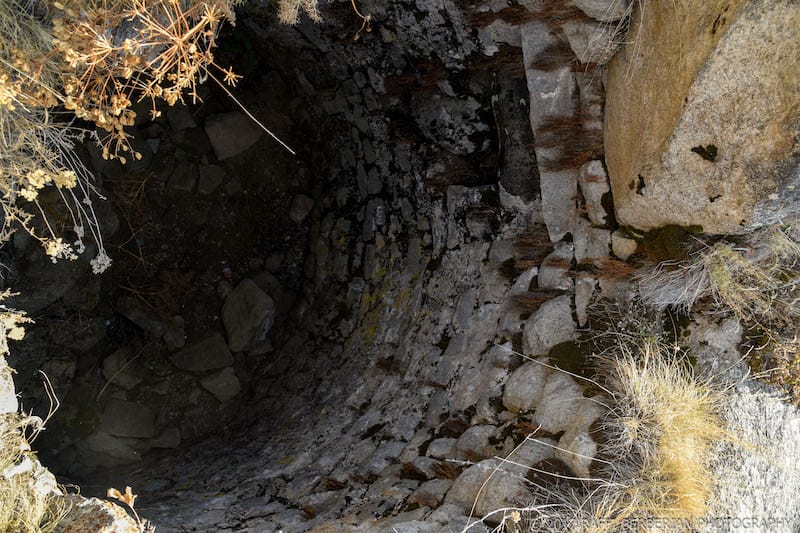
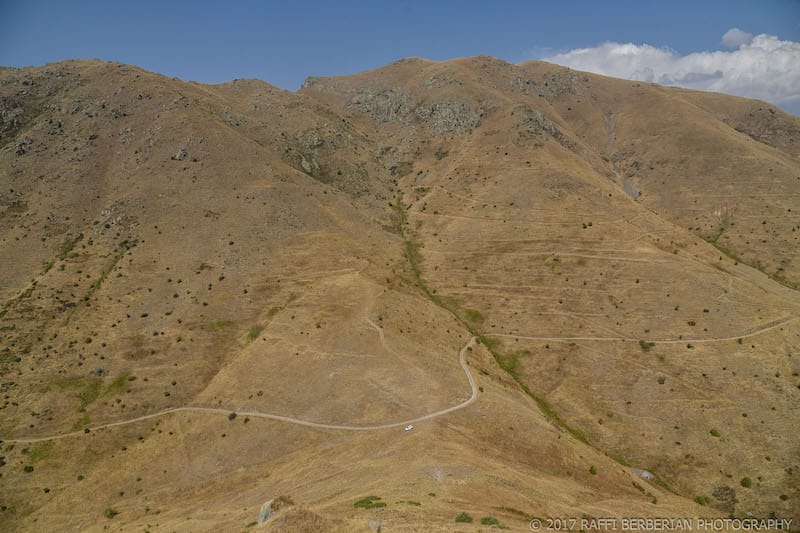
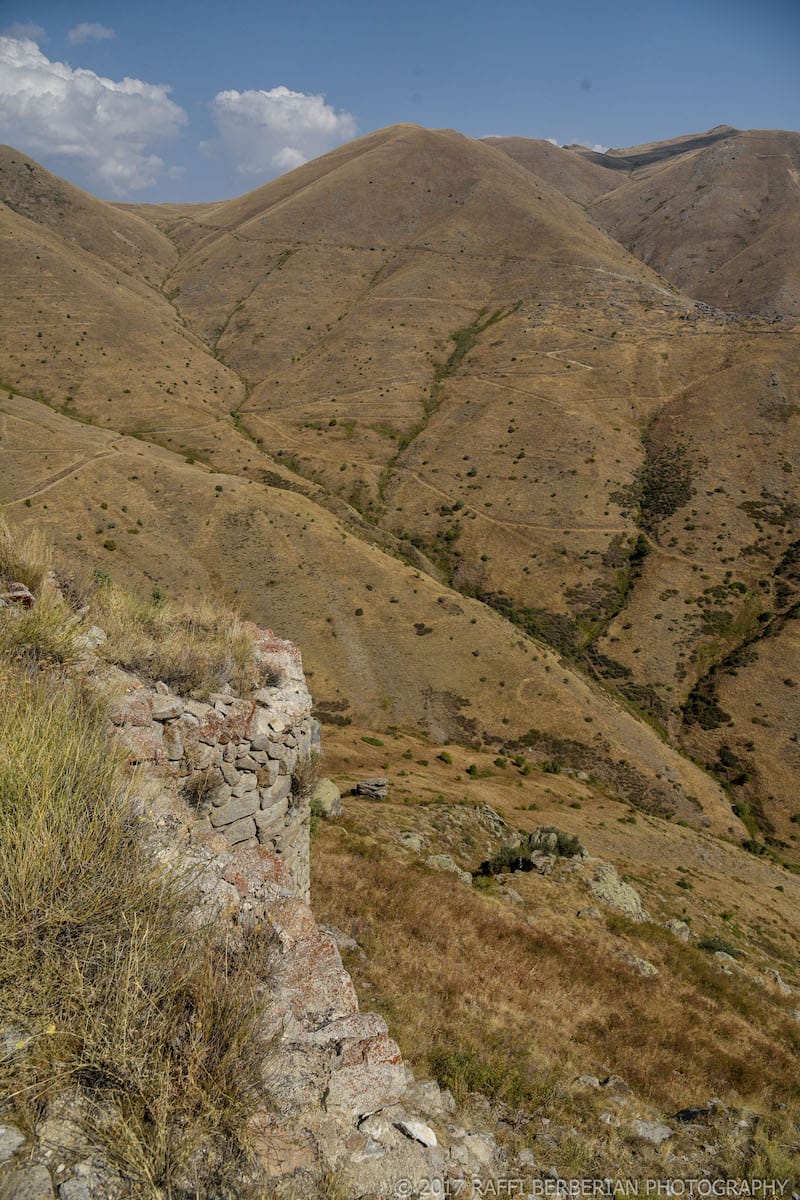
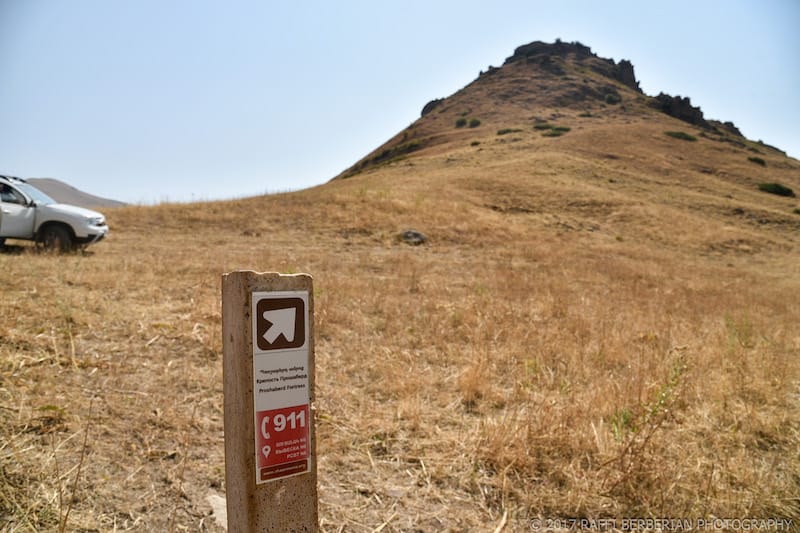
This information is so helpful. There is a special type of Armenian rug design called Prosaberd. I assume the design originated in this area and where it was first woven.